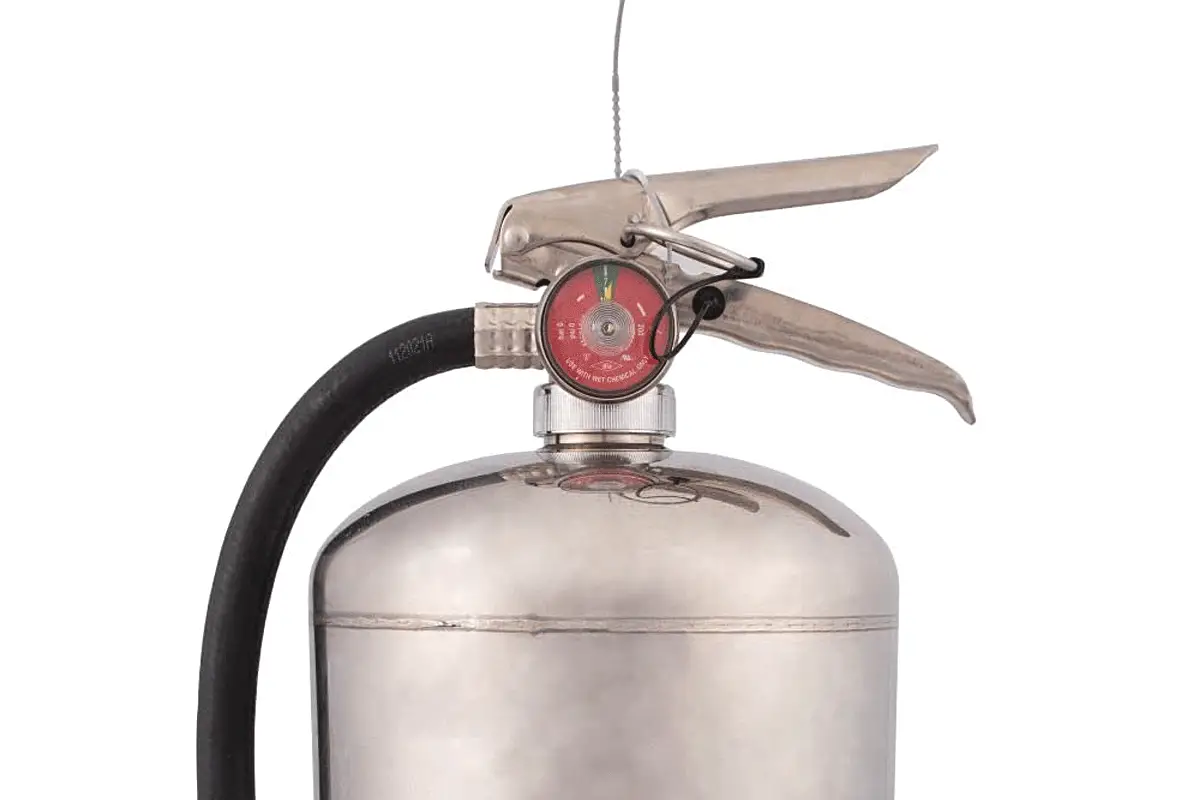Class K fire extinguishers are used to extinguish fires involving vegetable oils, animal oils, or fats utilized in commercial cooking appliances, which are likely to start kitchens, restaurants, cafeterias, food trucks, bakeries, and other food businesses.
Here are the most common places Class K fire extinguishers are used:
- Commercial Kitchens: This is the primary battleground for Class K extinguishers. Commercial kitchens deal with large quantities of cooking oil daily. A grease fire here can escalate rapidly, and having a Class K extinguisher readily available is crucial for fast and effective intervention.
- Home Kitchens (with reservations): While not as common, Class K extinguishers can also be a wise investment for domestic kitchens. If you frequently use a deep fryer or cook with large amounts of oil, having a Class K extinguisher is the correct type of fire extinguisher for a kitchen to have at hand to provide an extra layer of safety.
What Are Class K Fires?
Class K fires are a specific type of fire fueled by vegetable or animal-based cooking oils and greases. These fires are common in kitchens and can be particularly dangerous due to high flammability, risk of re-flash, and spreading rapidly.
Here’s an overview of the risk factors of Class K fires:
- High Flammability: Cooking oils and greases have a much lower ignition point than common materials like wood or paper. This means they can catch fire much more easily, especially when heated to high temperatures.
- Risk of Re-flash: When burning oil is disturbed, for example by throwing water on it, the hot oil can vaporize and ignite explosively in a phenomenon called a “flash over” or “re-flash.” This can significantly worsen the fire and pose a serious danger.
- Spreading: Spilled oil can act as a fuel source, allowing the fire to spread rapidly across surfaces and potentially engulfing nearby objects.
Because of these unique characteristics, Class K fires require a special type of fire extinguisher, called a “Class K fire extinguisher”, to be extinguished safely and effectively.

Features of Class K Fire Extinguisher
Class K fire extinguishers are designed specifically to combat the unique challenges of cooking oil and grease fires.
Here’s a breakdown of their key features:
Extinguishing Agent
Unlike regular fire extinguishers that might use water, foam, or dry powder, Class K extinguishers typically contain a wet chemical agent. This agent is often a potassium-based solution (like potassium acetate or citrate) that works through a two-part process:
- Saponification: When the wet chemical agent comes into contact with burning oil, it chemically reacts with the fats and oils, converting them into a soapy substance. This soapy layer essentially smothers the fire by hindering the oil’s ability to burn.
- Cooling: The wet chemical agent also absorbs heat effectively, helping to cool the burning oil and prevent re-ignition.
Nozzle Design
Class K extinguishers often have a special spray nozzle that discharges the wet chemical agent in a fine mist. This misting pattern helps to blanket the burning oil more effectively and minimize the risk of splashing, which could spread the fire.
Pressure Gauge
Most Class K extinguishers are equipped with a pressure gauge that allows for easy monitoring of the extinguisher’s internal pressure. This is important for ensuring the extinguisher is properly charged and ready for use.
Durability
Considering the demanding environment of a commercial kitchen, Class K extinguishers are typically constructed with durable materials that can withstand the heat, grease, and moisture commonly present. Stainless steel is a frequent choice for the extinguisher shell.
Visual Identifier
To ensure quick and easy identification in an emergency, Class K extinguishers are often marked with a distinctive symbol or label, typically the letter “K” on a red background, on the canister.
Wrapping Up
In essence, Class K fires are no match for the specialized extinguishing power of Class K fire extinguishers. Class K fire extinguishers are designed to target the unique properties of cooking oil fires, smothering the flames and preventing dangerous re-flash.
By having the right fire extinguisher on hand in a commercial cooking setting or home kitchen, you can significantly reduce the risk of a fire and ensure a safe cooking environment. Consider a Class K extinguisher if you do a lot of oil-based cooking – a small investment that can bring peace of mind and potentially prevent a major disaster.
